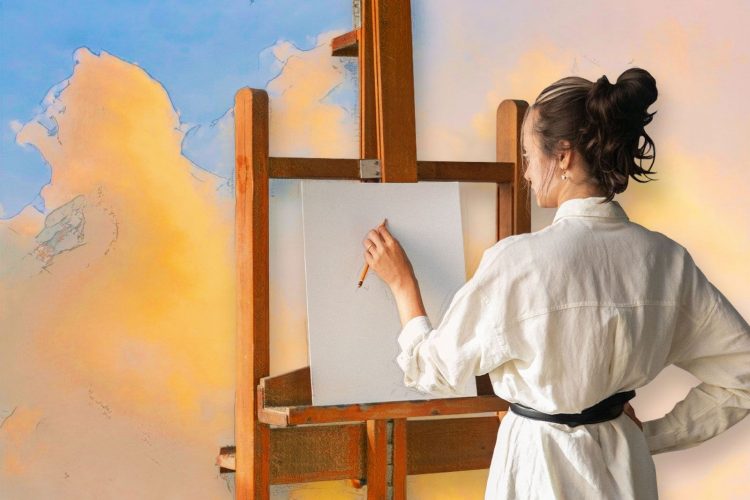In the world of healing, art serves as a soothing balm, gently stroking the wounds of patients and caregivers alike. Like a vibrant mural adorning the sterile walls of a hospital corridor, healthcare artwork has emerged as a powerful force in transforming clinical spaces into therapeutic environments.
This article delves into the profound impact of art beyond medicine, exploring its ability to reduce stress and anxiety, promote relaxation and well-being, enhance patient experiences, and ultimately improve outcomes.
From captivating paintings that transport viewers to serene landscapes to thought-provoking sculptures that ignite hope within weary souls, healthcare artwork has paved the way for holistic healing practices.
Through an examination of research studies and real-life anecdotes, this article aims to shed light on the immense power held within these artistic expressions and how they contribute to creating compassionate spaces where healing can truly flourish.
The Healing Power of Art in Healthcare Settings
Step into a healthcare facility adorned with captivating artwork and experience the transformative power of art in healing. The presence of art in healthcare settings has been proven to have a positive impact on patients, staff, and visitors alike.
Research shows that viewing art can reduce stress levels, lower blood pressure, and alleviate anxiety. It provides a distraction from pain and discomfort while creating an environment that promotes relaxation and well-being.
Artwork also serves as a means of communication, allowing patients to express their emotions and experiences visually when words may fail them. Moreover, it fosters a sense of community by engaging patients in conversations about the artwork or participating in creative activities together.
Ultimately, incorporating art into healthcare environments creates a more holistic approach to healing that goes beyond traditional medicine.
Reducing Stress and Anxiety through Art
Incorporating visual elements into healthcare environments, such as calming nature scenes or abstract designs, can effectively alleviate stress and anxiety. Research has shown that when patients are surrounded by artwork that promotes relaxation and tranquility, it can lower their blood pressure and heart rate, reducing feelings of stress and anxiety. The presence of art in healthcare settings also provides a distraction from medical procedures or waiting times, allowing patients to focus on something positive and uplifting. Art engages the mind and emotions, providing an escape from worry or pain. Additionally, creating art itself can be a therapeutic activity for patients, giving them a sense of control and expression in their healing process. Overall, incorporating art into healthcare environments is a powerful tool for reducing stress and anxiety among patients.
Promoting Relaxation and Well-being with Healthcare Artwork
Incorporating visual elements into healthcare environments with calming and tranquil designs can effectively promote relaxation and well-being. Healthcare artwork has the power to create a soothing atmosphere, which can be particularly beneficial in high-stress areas such as hospitals and clinics. Here are five ways in which healthcare artwork promotes relaxation and well-being:
- Natural landscapes: Displaying images of serene nature scenes, like lush forests or peaceful beaches, can evoke feelings of tranquility and provide a sense of escape from the clinical environment.
- Abstract art: Abstract artworks with calming colors and gentle shapes can help patients focus their attention away from their worries and encourage a state of mindfulness.
- Soft lighting: Incorporating soft lighting techniques into healthcare artwork enhances the overall ambiance, creating a warm and inviting space.
- Color psychology: Using specific colors known for their relaxing properties, such as blues or greens, can have a positive impact on patients’ mood and well-being.
- Personal connection: Artwork that is meaningful to patients, such as local landmarks or cultural references, can create a sense of familiarity and comfort.
Enhancing Patient Experiences through Art
Transform your healthcare space into a captivating and immersive environment by harnessing the power of artistic elements. Enhancing patient experiences through art has become an increasingly popular trend in healthcare settings.
The presence of artwork can create a positive atmosphere, reducing stress and anxiety for patients. Studies have shown that exposure to visual art can distract patients from pain, improve their mood, and even shorten their hospital stays.
Artwork provides a sense of comfort and familiarity, making patients feel more at ease in an otherwise clinical environment. Moreover, it also serves as a conversation starter between patients and healthcare providers, fostering communication and connection.
By incorporating art into healthcare spaces, hospitals and clinics can uplift the overall patient experience, promoting healing and well-being in both body and mind.
Improving Outcomes with the Use of Art in Healthcare
Improve your healthcare experience by immersing yourself in the captivating and immersive environment created through the use of artistic elements. Can art truly enhance patient outcomes? Studies suggest that integrating art into healthcare settings can have a positive impact on patient outcomes. Here are three ways in which art can contribute to improved health outcomes:
- Reducing stress and anxiety: Art has been shown to promote relaxation and reduce stress levels, which can lead to better overall health outcomes.
- Enhancing communication and empathy: Artwork allows patients, caregivers, and medical professionals to engage in conversations beyond medical jargon, fostering empathy and understanding.
- Promoting healing environments: The presence of art in healthcare spaces creates a more welcoming atmosphere that can positively affect patients’ physical and emotional well-being.
By incorporating art into healthcare settings, we can create an environment that supports healing, improves patient experiences, and ultimately enhances overall health outcomes.
Conclusion
In conclusion, healthcare artwork has a profound impact on patients and healthcare settings. It serves as a powerful tool for reducing stress and anxiety, promoting relaxation and well-being, enhancing patient experiences, and improving outcomes.
The healing power of art transcends medicine by creating an environment that fosters healing and emotional support. Just like a vibrant palette on canvas, these artworks breathe life into healthcare spaces, making them more than just clinical environments. They become oases of comfort and solace for those in need.

